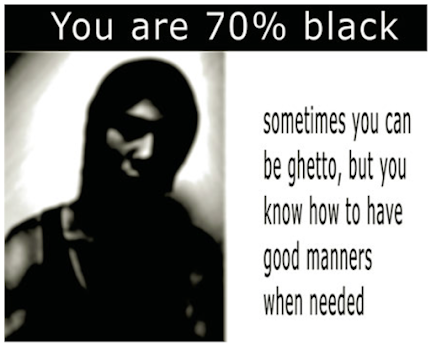Sometimes It's Okay

Lippi-Green uses this image from an online quiz to show how Black Language is viewed. Having Black Language is directly juxtaposed against the idea of having manors, the simple existence of having manors "makes you less black." Directly showing the negative view on Black Language, this image implies that at the end of the day vernacular makes you more or less well-received (p187). ( Lippi-Green, Rosina. English with an Accent : Language, Ideology and Discrimination in the United States , Taylor & Francis Group, 2011. pp. 182-210, ProQuest Ebook Central , https://ebookcentral-proquest-com.proxy.lib.uiowa.edu/lib/uiowa/detail.action?docID=958316.)
